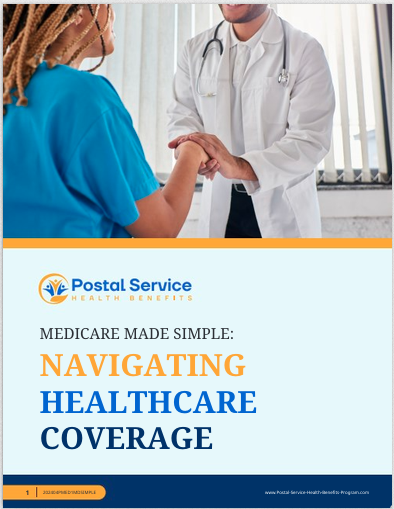Key Takeaways:
-
The PSHB program introduces tailored healthcare benefits designed specifically for Postal Service employees and retirees, ensuring comprehensive and streamlined options for 2025.
-
With the shift from FEHB to PSHB, understanding the enrollment process, Medicare integration, and cost implications is vital to maintaining optimal coverage.
Understanding the PSHB Program’s Transition in 2025
The Postal Service Health Benefits (PSHB) program is a groundbreaking shift in how Postal Service employees and retirees access healthcare. Effective January 1, 2025, this program replaces the Federal Employees Health Benefits (FEHB) system for eligible participants, bringing with it unique benefits and requirements. For postal retirees, the PSHB program reshapes the healthcare landscape by offering tailored plans, integrating Medicare, and addressing specific needs of postal workers and their families.
Why the PSHB Program Matters
If you’re a Postal Service retiree, this transition represents more than just a name change. It is a fundamental overhaul of your healthcare options, designed to provide better alignment with your needs. The PSHB program offers:
-
Customized Benefits: Plans cater specifically to postal employees and retirees, offering enhanced coverage options.
-
Streamlined Enrollment: Simplified processes ensure continuity of care without administrative headaches.
-
Cost Efficiency: With options for Medicare integration, many retirees may see reduced out-of-pocket costs.
Key Differences Between FEHB and PSHB
The PSHB program departs from the FEHB system in several critical ways:
-
Exclusive Coverage: PSHB plans are specifically designed for Postal Service employees, retirees, and their eligible family members.
-
Mandatory Enrollment: To maintain health benefits under PSHB, Medicare-eligible retirees and family members must enroll in Medicare Part B unless exempt.
-
Pharmacy Benefits: Prescription drug coverage is seamlessly integrated with Medicare Part D through an Employer Group Waiver Plan (EGWP).
Who Needs to Enroll?
The enrollment requirements vary depending on your retirement status and Medicare eligibility:
-
Medicare-Eligible Retirees: If you retired before January 1, 2025, you are not required to enroll in Medicare Part B, although it is strongly recommended.
-
Current Employees: Those nearing retirement should familiarize themselves with Medicare Part B enrollment to avoid gaps in coverage.
-
Family Members: Medicare-eligible family members of Postal Service retirees must also enroll in Medicare Part B to retain PSHB benefits.
Navigating Open Season and Enrollment
Open Season for the PSHB program ran from November 11 to December 13, 2024. If you missed this window, changes can only be made during Qualifying Life Events (QLEs). Knowing your options and acting within the specified timelines is essential to maintaining uninterrupted coverage.
Steps to Ensure Smooth Enrollment
-
Review Your Current Coverage: Compare your FEHB plan to available PSHB options.
-
Understand Medicare Integration: Determine whether enrolling in Medicare Part B makes sense for your healthcare needs and budget.
-
Complete Enrollment on Time: Missing the Open Season deadline may restrict your ability to make changes until the next enrollment period.
Medicare Integration: What You Need to Know
Medicare integration is a cornerstone of the PSHB program. For many retirees, this integration results in improved benefits and lower costs. However, it also introduces mandatory requirements for some participants.
How Medicare Works with PSHB
-
Part B Enrollment: Medicare Part B covers outpatient services, and PSHB plans often waive deductibles or provide premium reimbursements for enrollees.
-
Prescription Drug Coverage: PSHB plans automatically include Medicare Part D coverage through EGWP, simplifying medication costs.
-
Cost-Sharing Reductions: Many plans offer reduced copayments and coinsurance for those enrolled in both Medicare and PSHB.
Financial Implications
The standard Medicare Part B premium is $185 in 2025, with higher-income earners paying more under the Income-Related Monthly Adjustment Amount (IRMAA). Balancing these costs against PSHB benefits is critical to optimizing your healthcare budget.
Exploring PSHB Benefits
The PSHB program offers a range of benefits designed to meet the diverse needs of Postal Service retirees. Understanding these features can help you make informed decisions about your healthcare.
Comprehensive Coverage Options
PSHB plans include a variety of healthcare services, such as:
-
Preventive Care: Regular screenings and check-ups to maintain overall health.
-
Specialist Services: Access to a wide network of specialists without the need for referrals.
-
Hospitalization: Coverage for inpatient care, including surgeries and extended stays.
-
Mental Health Services: Support for emotional well-being through counseling and therapy.
Supplemental Benefits
Many PSHB plans offer additional benefits, such as:
-
Dental and Vision Coverage: Expanded services for routine and specialized care.
-
Wellness Programs: Incentives and resources to promote healthy living.
-
Telehealth Services: Convenient access to medical professionals from home.
Pharmacy Benefits
Prescription drug coverage under PSHB is integrated with Medicare Part D. This ensures:
-
Cost Savings: Reduced out-of-pocket expenses for medications.
-
Simplified Access: One plan for both medical and pharmacy benefits.
-
Catastrophic Protection: Coverage for high-cost prescriptions, capped at $2,000 annually.
Understanding Cost Implications
While the PSHB program aims to provide cost-effective solutions, it’s important to understand how premiums, deductibles, and copayments affect your overall expenses.
Premium Contributions
Premiums for PSHB plans vary depending on the level of coverage and Medicare enrollment status. Retirees who enroll in Medicare Part B may benefit from lower premium contributions due to government subsidies and plan incentives.
Deductibles and Copayments
In 2025, the Medicare Part A deductible is $1,676 per benefit period, while the Part B deductible is $257 annually. PSHB plans often offset these costs by waiving deductibles or reducing copayments for Medicare enrollees.
Out-of-Pocket Maximums
The $2,000 annual cap on out-of-pocket drug costs under Medicare Part D provides significant financial relief for retirees with high prescription expenses.
Addressing Common Questions
Switching to the PSHB program raises several questions for retirees. Here are answers to some of the most common concerns:
-
Can I keep my current doctors? Yes, as long as your provider is in the PSHB plan’s network.
-
What happens if I don’t enroll in Medicare Part B? You may lose access to PSHB benefits unless you qualify for an exemption.
-
Are there additional costs for family coverage? Family coverage may involve higher premiums, but the benefits extend to all eligible dependents.
Staying Informed
To ensure you’re making the best choices, regularly review communications from the Postal Service and the PSHB program. Pay close attention to Annual Notice of Change (ANOC) letters, which detail updates to your plan’s benefits and costs.
Making the Most of Your PSHB Benefits
Maximizing your PSHB coverage requires proactive engagement. Here are some tips to help you get the most out of your plan:
-
Utilize Preventive Services: Take advantage of free screenings and vaccinations to stay healthy.
-
Leverage Wellness Programs: Participate in activities and resources designed to improve your well-being.
-
Understand Your Network: Ensure your preferred providers are covered under your plan.
-
Plan for Prescription Costs: Use the Medicare Prescription Payment Plan to spread high medication costs over the year.
Looking Ahead: Why PSHB Represents Progress
The PSHB program marks a significant advancement in healthcare for Postal Service retirees. By offering tailored benefits, integrating with Medicare, and addressing the unique needs of postal workers, it provides a more comprehensive and cost-effective solution than its predecessor. As you navigate this new system, understanding your options and acting proactively will ensure you maintain the coverage that best suits your needs.






